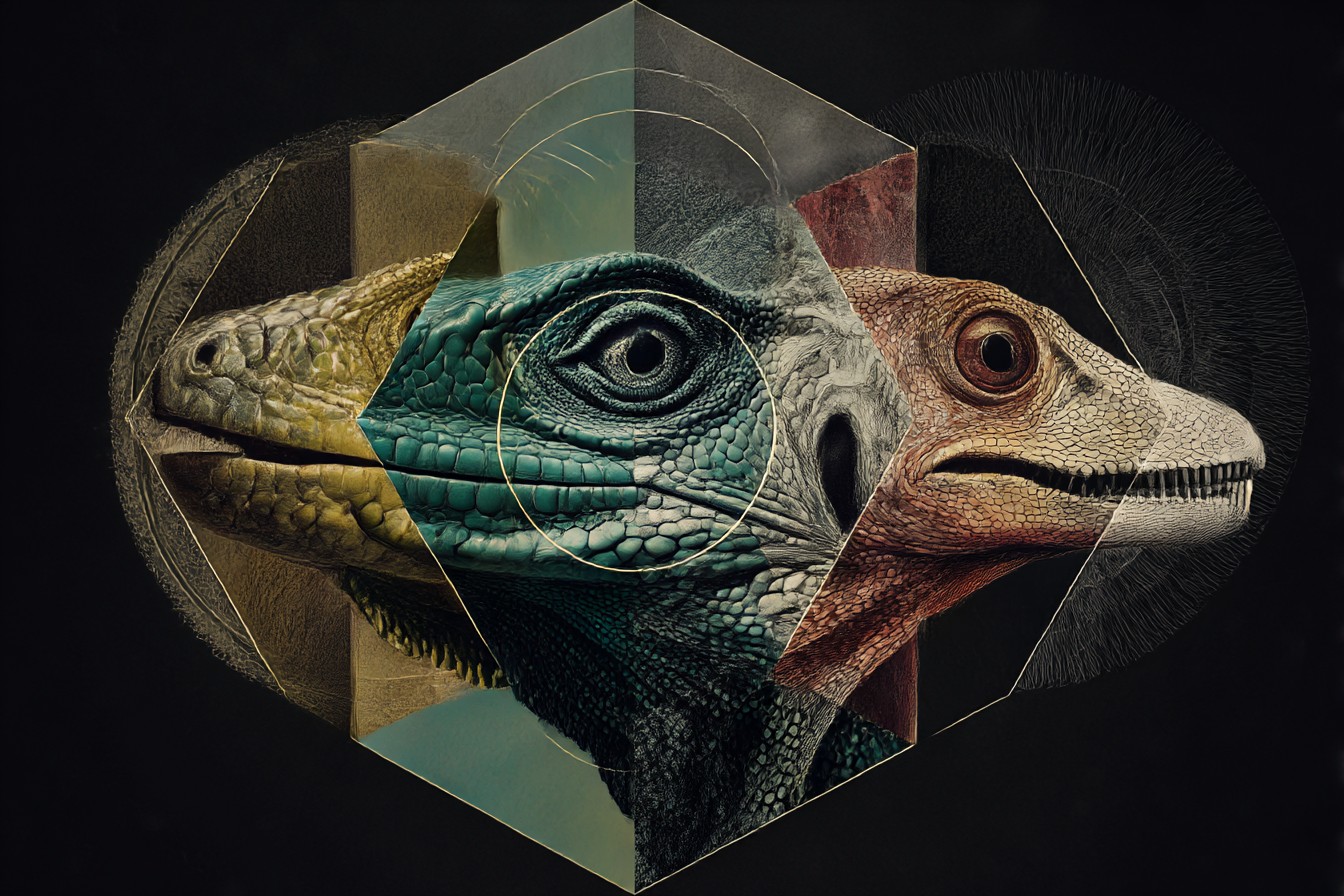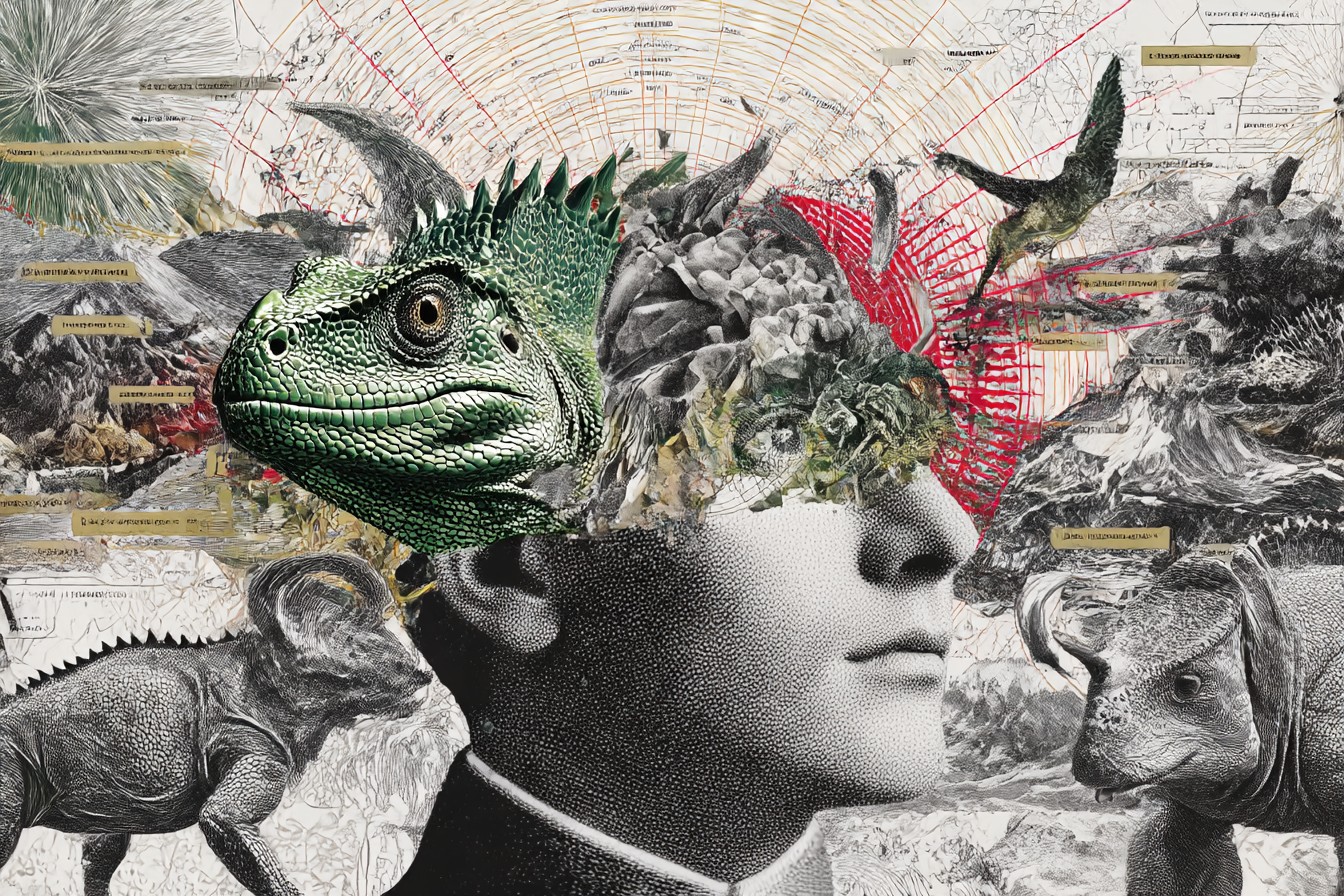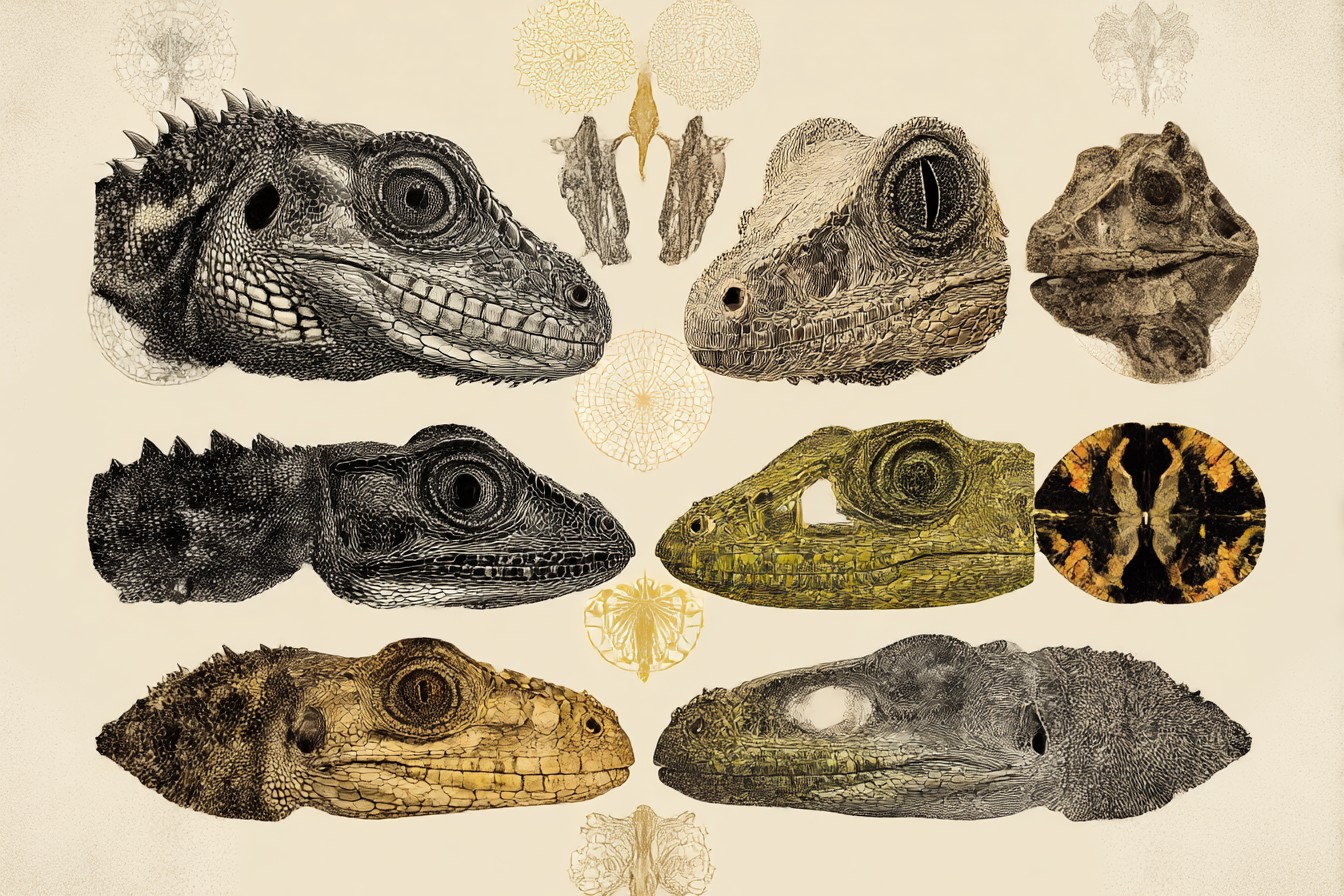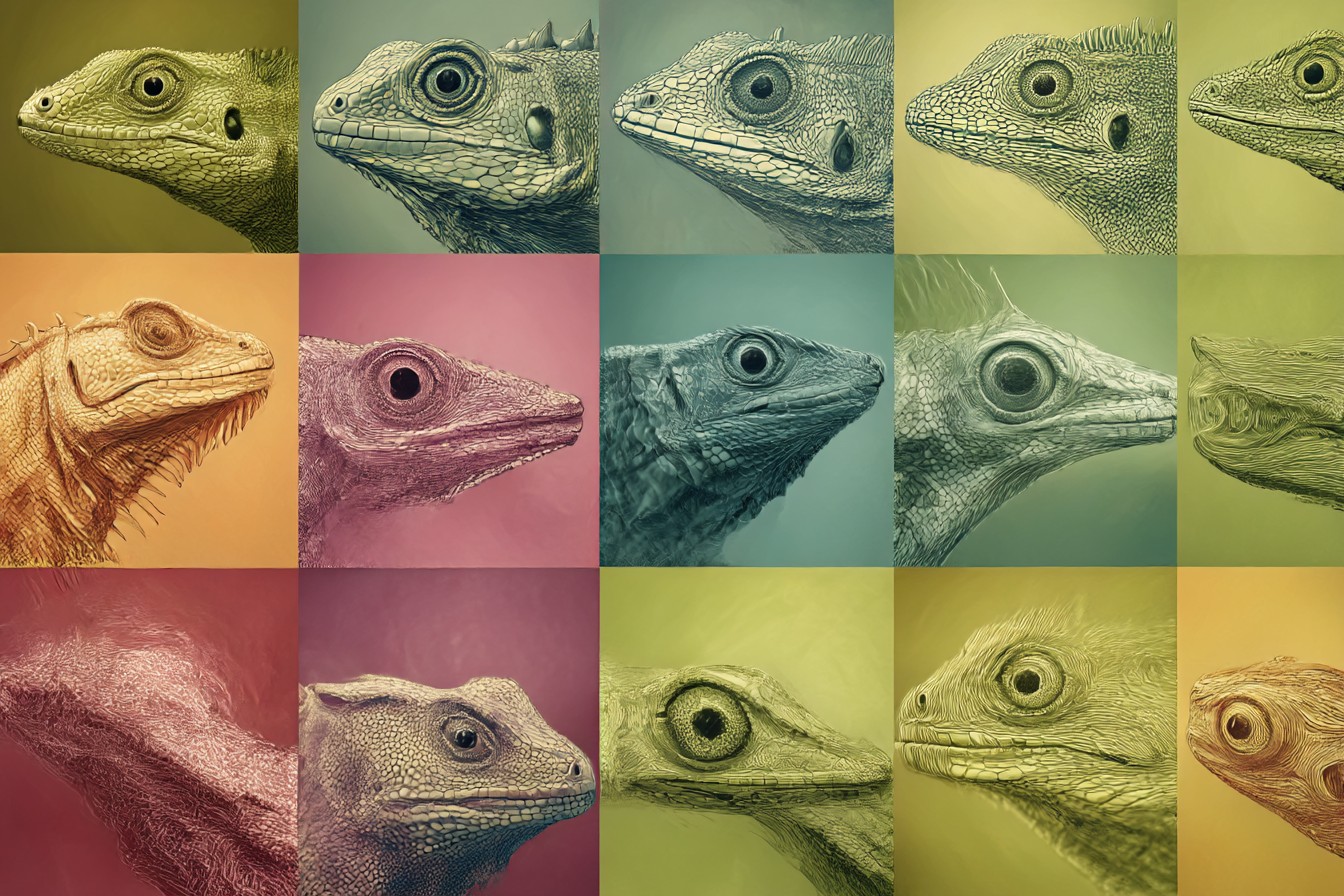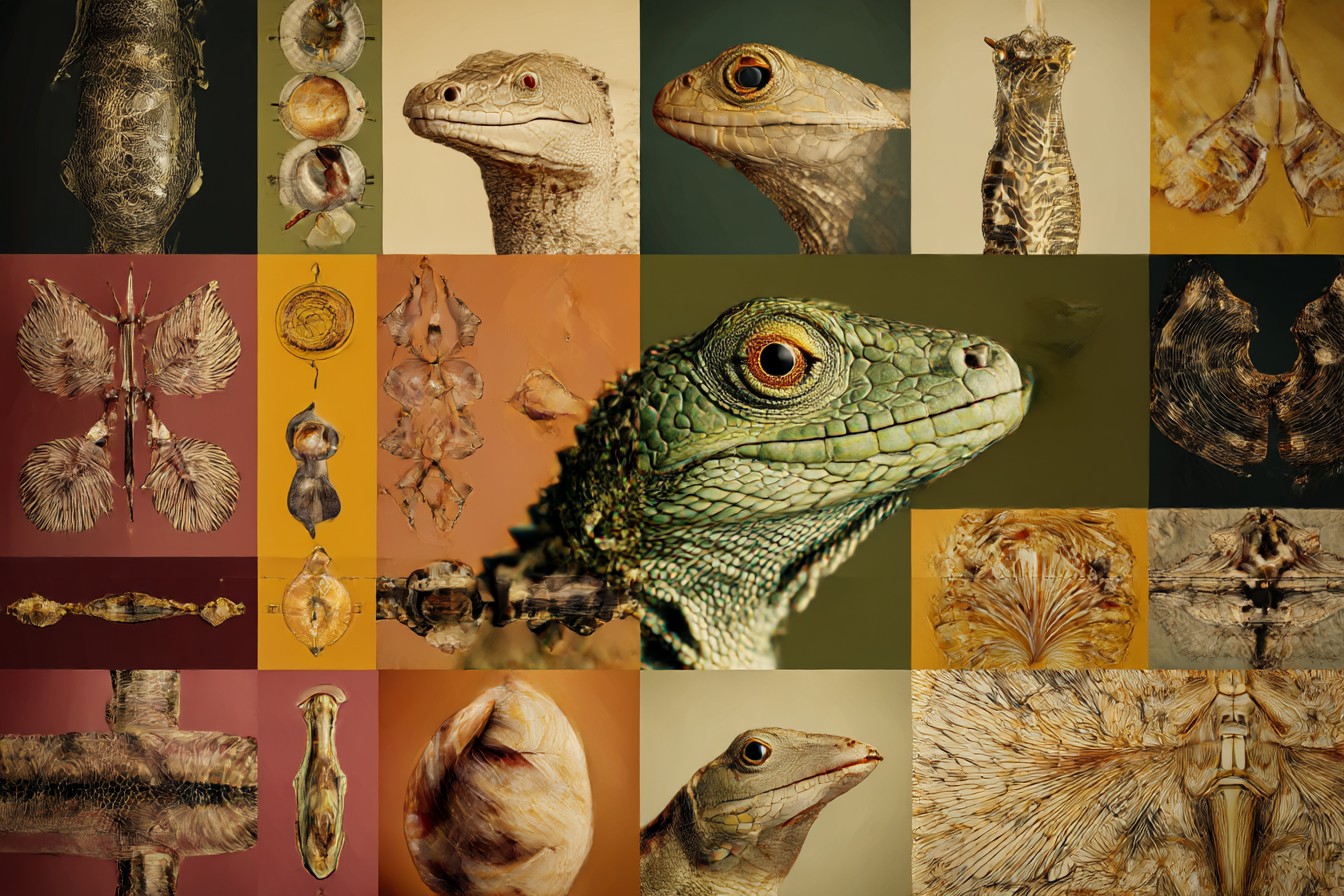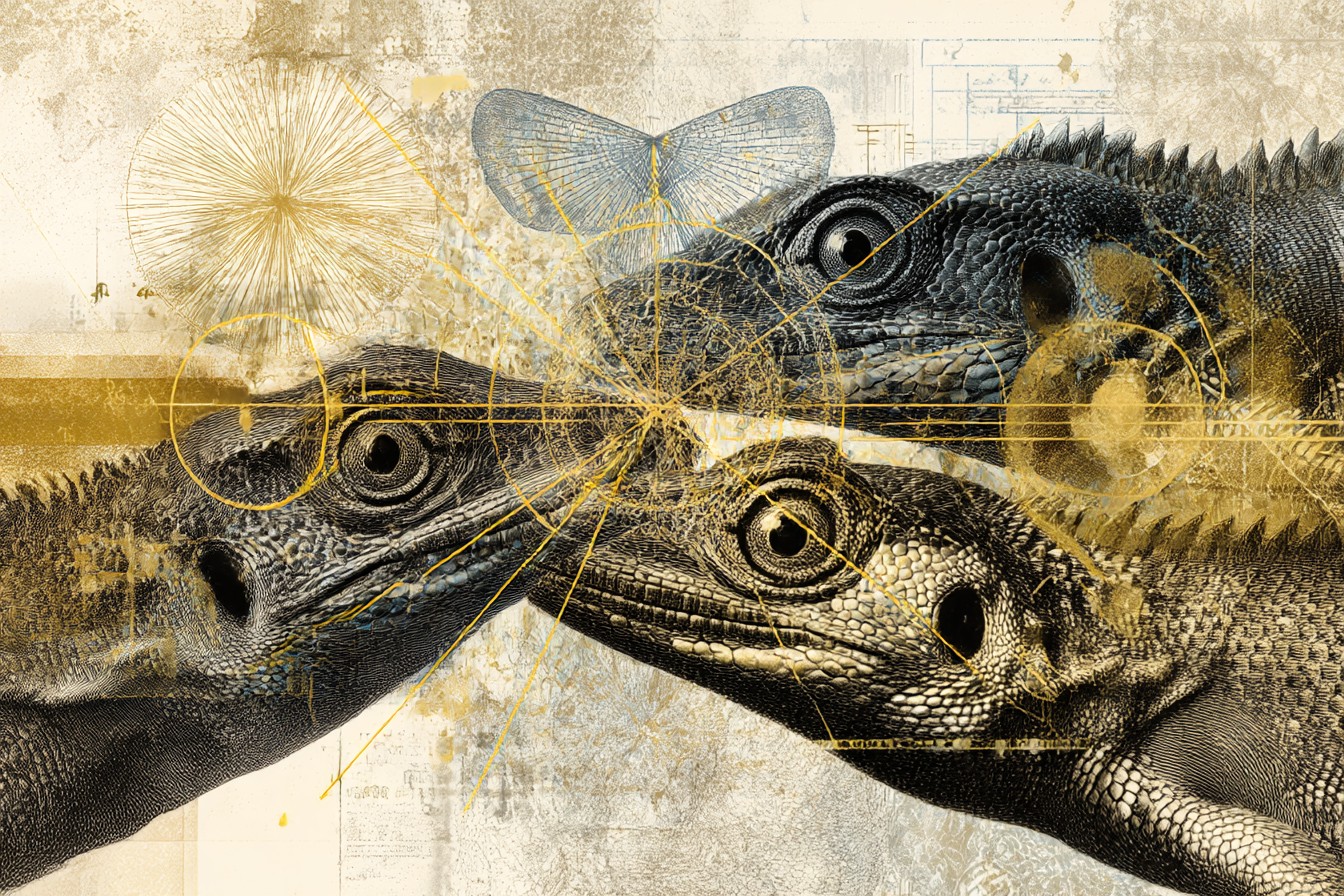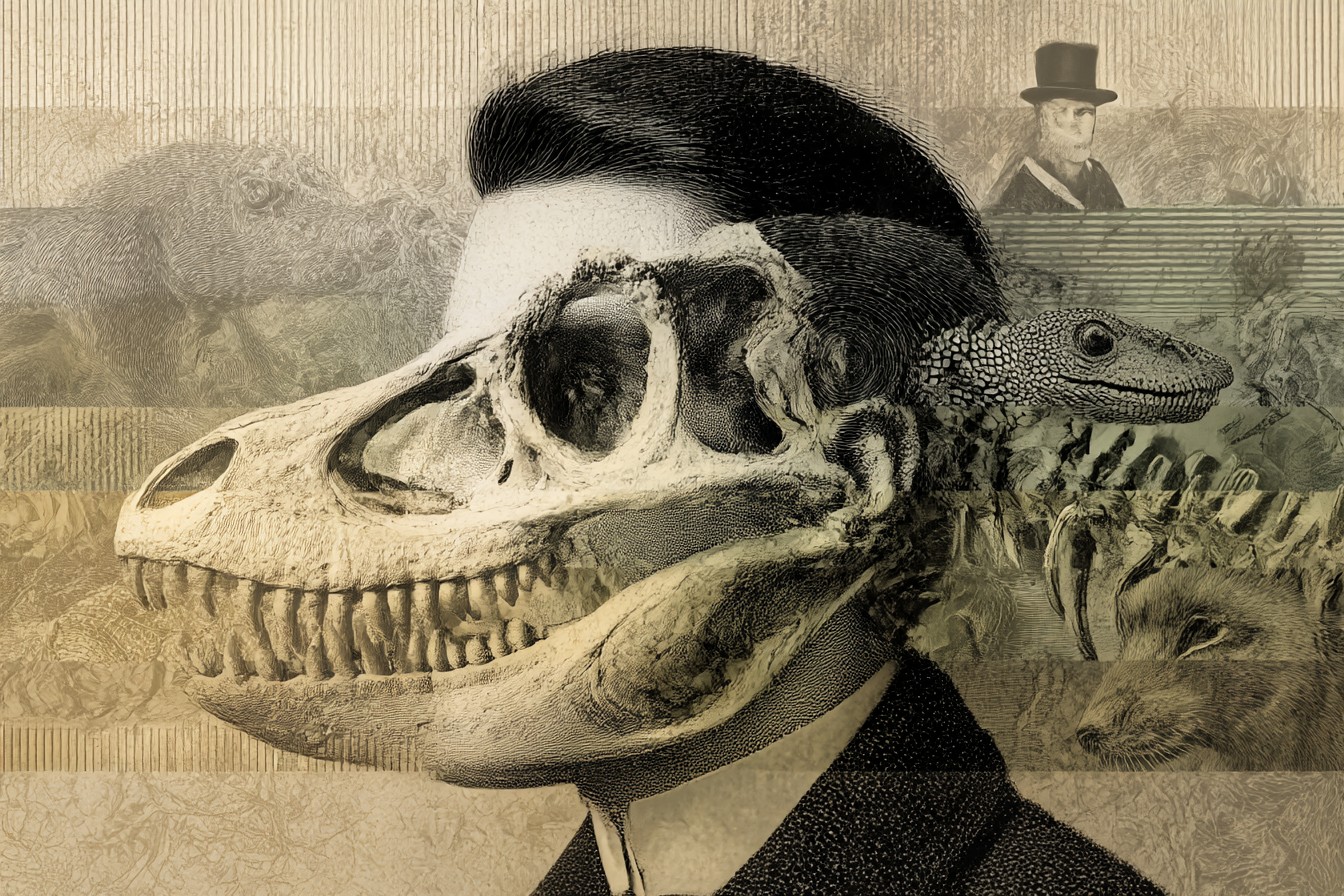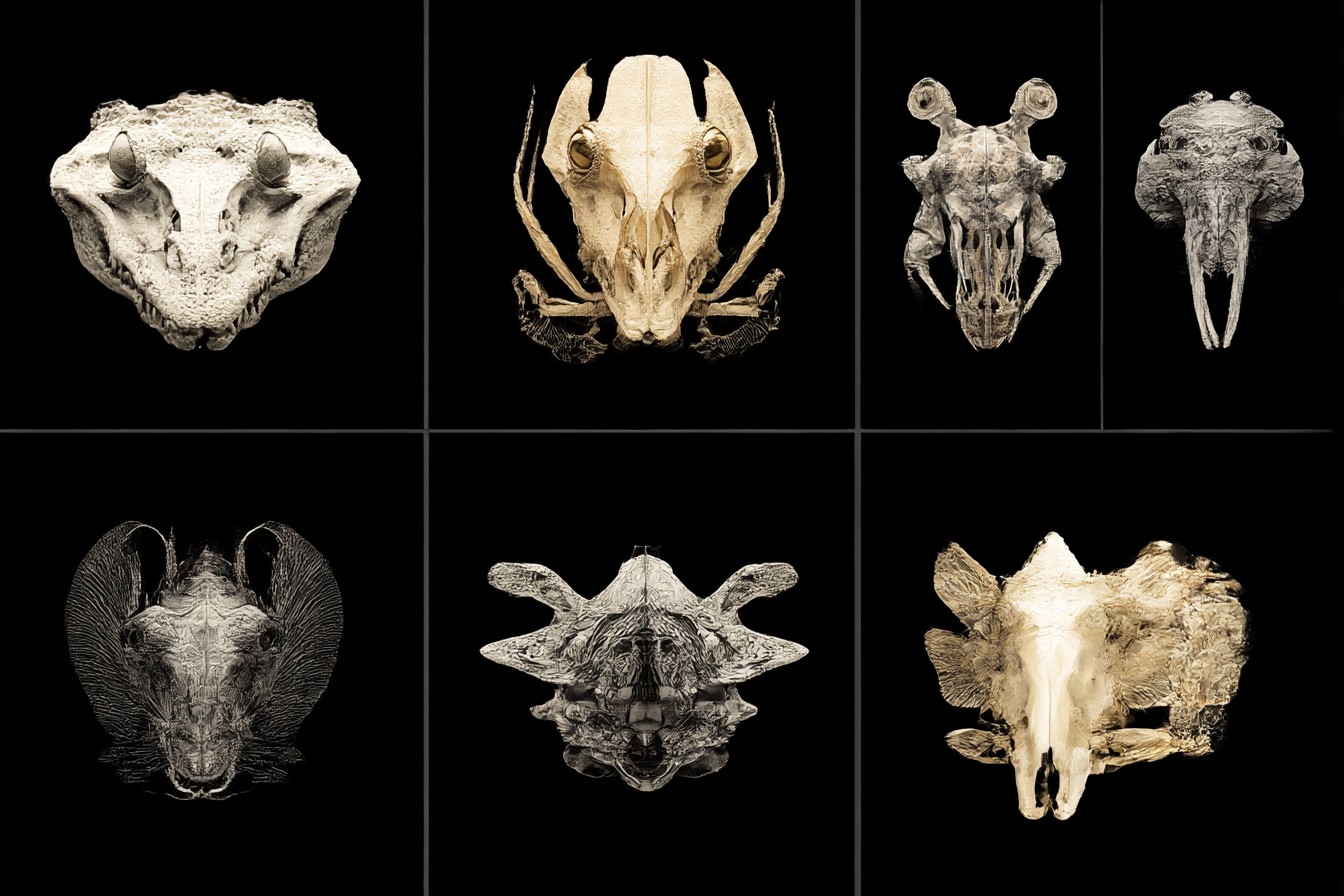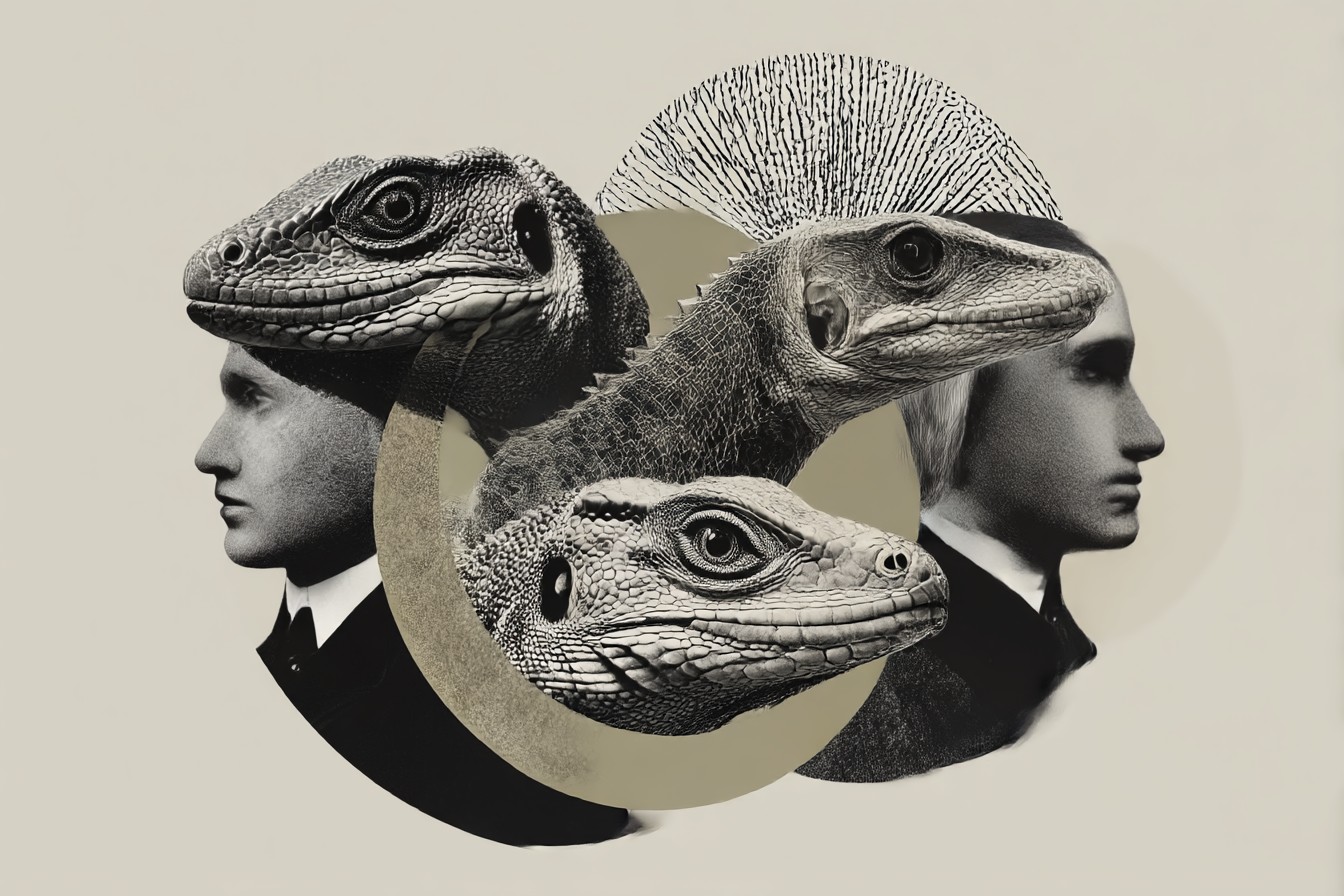It started, like most of my questionable scientific endeavors, at approximately 3:17 AM on a Tuesday. I’d been reading about evolutionary psychology while simultaneously reviewing some paleontological journals (look, my brain doesn’t do the whole “focus on one thing” very well), when I had what Mei later described as “another one of your concerning mental connections.”
“What if,” I whispered to my half-empty coffee mug, “our personalities aren’t just random collections of traits but evolutionary artifacts from different periods of development?”
Here’s the thing about evolutionary biology—it doesn’t just happen all at once. We didn’t go from single-celled organisms to beings who create TikTok challenges and worry about retirement funds in one go. We built ourselves in layers, like a really inefficient geological formation, with each new biological operating system installing itself on top of the previous ones rather than replacing them entirely.
I grabbed my notebook—the one with “POTENTIALLY CATASTROPHIC IDEAS” written on the cover in what might be dried kombucha starter culture—and started mapping it out. If our brains developed in rough chronological order from the brain stem (ancient, reptilian functions) to the limbic system (mammalian emotional responses) to the neocortex (higher reasoning), couldn’t our personality traits be similarly stratified?
The coffee maker gurgled ominously in the background. A bad sign. The last time it made that specific frequency of protest, I’d been attempting to calculate the exact mathematical formula for the perfect cup based on water mineralization levels, and we’d had to replace both the machine and part of the countertop. But this was different. This wasn’t about to cause property damage. Probably.
I called Josh at 3:42 AM.
“What catastrophe are you currently engineering?” he mumbled, clearly asleep until approximately seven seconds ago.
“I need you to help me categorize my personality characteristics by geological era,” I explained, as if this were a perfectly reasonable request.
A long silence. “Jamie, we’ve talked about the difference between ‘urgent scientific inquiry’ and ‘something that could wait until morning’.”
“This is important! What if understanding the evolutionary age of our psychological traits could help us better manage internal conflicts? Like when part of me wants to carefully document experimental procedures and another part wants to see what happens if I put metal in the microwave?”
Another silence. Then: “The Cambrian explosion was roughly 541 million years ago. Start there and work forward. And please don’t call me again until at least 9 AM.”
The framework came together with surprising speed. I created a geological timeline of personality development, correlating traits with the eras in which they likely developed evolutionary advantages. My prehistoric, Paleozoic traits (approximately 541-251.9 million years ago) included survival instincts, fear responses, and that peculiar drive that makes me hoard snacks in my desk drawer despite living three minutes from a 24-hour convenience store.
The Mesozoic era (251.9-66 million years ago)—dinosaur times!—seemed to house my territorial behaviors, hierarchical thinking patterns, and the aggressive competitiveness that once got me banned from departmental game night after the Monopoly incident. (In my defense, Dr. Khatri’s accusation of property acquisition irregularities was scientifically unfounded, and the board was already damaged before it hit the wall.)
By sunrise, I’d created a complete taxonomic system for personality traits based on when they evolutionarily appeared. My kitchen whiteboard was covered in geological timelines, brain development diagrams, and personality clusters labeled with increasingly specific evolutionary periods. The floor was littered with reference books, empty coffee mugs, and what appeared to be the remnants of three different midnight snacks I had no memory of preparing.
Mei found me there at 7:30 AM, staring at my creation with the wild-eyed intensity that she’s learned signals either a breakthrough or an impending disaster.
“You didn’t sleep, did you?” she asked, carefully stepping over a pile of evolutionary psychology textbooks.
“Sleep is a relatively recent evolutionary luxury,” I explained, gesturing wildly at my timeline. “Did you know your frustration with my experimental protocols is actually a Neogene development, only about 23 million years old, while my inability to register that frustration as a reason to modify my behavior is a much older Jurassic trait?”
She studied my work with the patient expression of someone who has witnessed my 3 AM scientific epiphanies before. “Fascinating. And have you considered that your tendency to create elaborate classification systems at inappropriate hours might itself be a relatively recent prefrontal cortex development?”
I hadn’t. I immediately added it to the chart under “Quaternary Period: 2.58 million years ago to present,” alongside “excessive pattern recognition” and “ability to justify terrible decisions with scientific terminology.”
The real experimental phase began later that week. I started recording daily observations of my behaviors, categorizing each response according to its evolutionary age. My tendency to freeze when startled? Pure Devonian period (419-359 million years ago), practically fish-brain material. My ability to calculate complex statistical probabilities while simultaneously making incredibly poor risk assessment decisions? Classic evolutionary mismatch between my ancient Paleozoic risk-evaluation systems and my much newer Quaternary analytical capabilities.
The most interesting data emerged when I began tracking conflicts between traits from different eras. When my Cretaceous territorial instincts (don’t touch my lab equipment without permission) clashed with my Neogene social cooperation tendencies (sharing resources advances collective knowledge), I experienced measurable physiological responses—increased heart rate, distinctive discomfort, and what Josh later described as “a facial expression like you’re trying to solve differential equations while being mildly electrocuted.”
I designed a series of controlled situations to trigger specific evolutionary-era responses, meticulously documenting the results. This included deliberately placing myself in scenarios where ancient and modern traits would compete—such as attending an academic conference where my Oligocene status-seeking behaviors battled my Pleistocene social anxiety in real-time. The resulting data was fascinating, though my colleague Dr. Whitman remains confused about why I asked her to rate my “apparent internal paleontological conflict” on a scale of 1-10 during my presentation on protein synthesis mechanisms.
Three weeks, 142 pages of observations, and one minor incident involving attempting to trigger my “territorial display behaviors” at a department meeting later, I had developed a complete self-analysis system. Each trait was classified, dated, and mapped to specific brain structures and evolutionary advantages. I called it the Geological Era Personality Taxonomy, or GEPT (though Mei suggested the more accurate “Jamie’s Excuse for Why He Can’t Remember to Take Out the Trash Despite Having Three Advanced Degrees”).
The practical applications were immediately apparent. When I found myself procrastinating on grant proposal deadlines, I could identify the conflict: my Paleocene reward-seeking behavior (immediate gratification from literally any other activity) was overriding my much newer Holocene long-term planning capabilities. When I felt irrationally anxious about public speaking, I could trace it to my Miocene-era social hierarchy awareness clashing with my Quaternary rational assessment that no one in the audience was actually going to exile me from the tribe.
“The data suggests,” I explained to Mei one evening, gesturing at the extensive charts now covering our living room wall, “that understanding the evolutionary age of competing internal drives allows for more effective mediation between them. My hypothesis is that by consciously recognizing which geological era is currently ‘driving the bus’ of my behavior, I can make more intentional choices.”
She studied my work, nodding slowly. “And which era created your ability to turn our apartment into a paleontological personality museum without consulting me first?”
“Late Eocene,” I replied immediately. “Approximately 38 million years ago. The development of complex social structures created selection pressure for individuals who could pursue personal interests while maintaining pair bonds. Not particularly well evolved yet, obviously.”
Here’s what fascinated me most: the older the evolutionary trait, the more difficult it was to override with conscious intervention. My Cambrian-era threat responses activated milliseconds before my Quaternary rational assessment could even begin processing. My Jurassic territoriality triggered powerful physiological responses that my modern prefrontal cortex could recognize as irrational but couldn’t immediately neutralize.
I presented my findings at the department’s informal research symposium, complete with a demonstration where I deliberately triggered era-specific responses and narrated the resulting internal conflicts in real-time. Dr. Khatri looked simultaneously impressed and concerned—an expression I’ve become quite familiar with over the years.
“While your methodology is… unconventional,” she commented afterward, “the framework has interesting implications for understanding psychological conflicts through an evolutionary lens.”
“Exactly!” I exclaimed. “It’s not just about categorizing traits—it’s about recognizing that we’re essentially walking geological records of evolutionary psychology! The data clearly shows that—”
“Please tell me you haven’t been experimenting on undergraduates,” she interrupted.
“Of course not,” I assured her. “This was entirely self-experimentation. Though I do have a fascinating proposal for a controlled study involving simulated predator threats and—”
“No,” she said firmly. “Absolutely not.”
Fair enough. My Holocene risk-assessment capabilities recognized this as a reasonable boundary.
The system has become my personal operating manual. When ancient and modern aspects of myself come into conflict, I can name them, track them, and sometimes even negotiate between them. Not always successfully—my Paleozoic cheese-acquisition drive still regularly overrides my Quaternary dietary planning—but with increasing awareness.
Look, I’m not suggesting everyone needs to categorize their personality traits by geological era. But understanding ourselves as products of evolutionary history—walking, talking, occasionally disaster-prone compilations of adaptations from different time periods—provides a fascinating framework for self-analysis. The conflicts that define our daily experiences aren’t random; they’re the echoes of millions of years of evolutionary programming all trying to operate simultaneously in environments radically different from those they evolved for.
My preliminary results suggest that self-awareness doesn’t have to be just psychological—it can be paleontological too. And while I can’t guarantee this approach will prevent all future 3 AM scientific epiphanies or impulsive experimental protocols, at least now I can confidently tell you which geological era is responsible for each questionable decision.
Now if you’ll excuse me, my Miocene curiosity is currently battling my Quaternary self-preservation instincts over a particularly questionable experiment involving stimulating different evolutionary brain regions with targeted sound frequencies. Preliminary results are… well, let’s just say the Paleozoic is currently winning, and Mei has hidden all the speakers.


